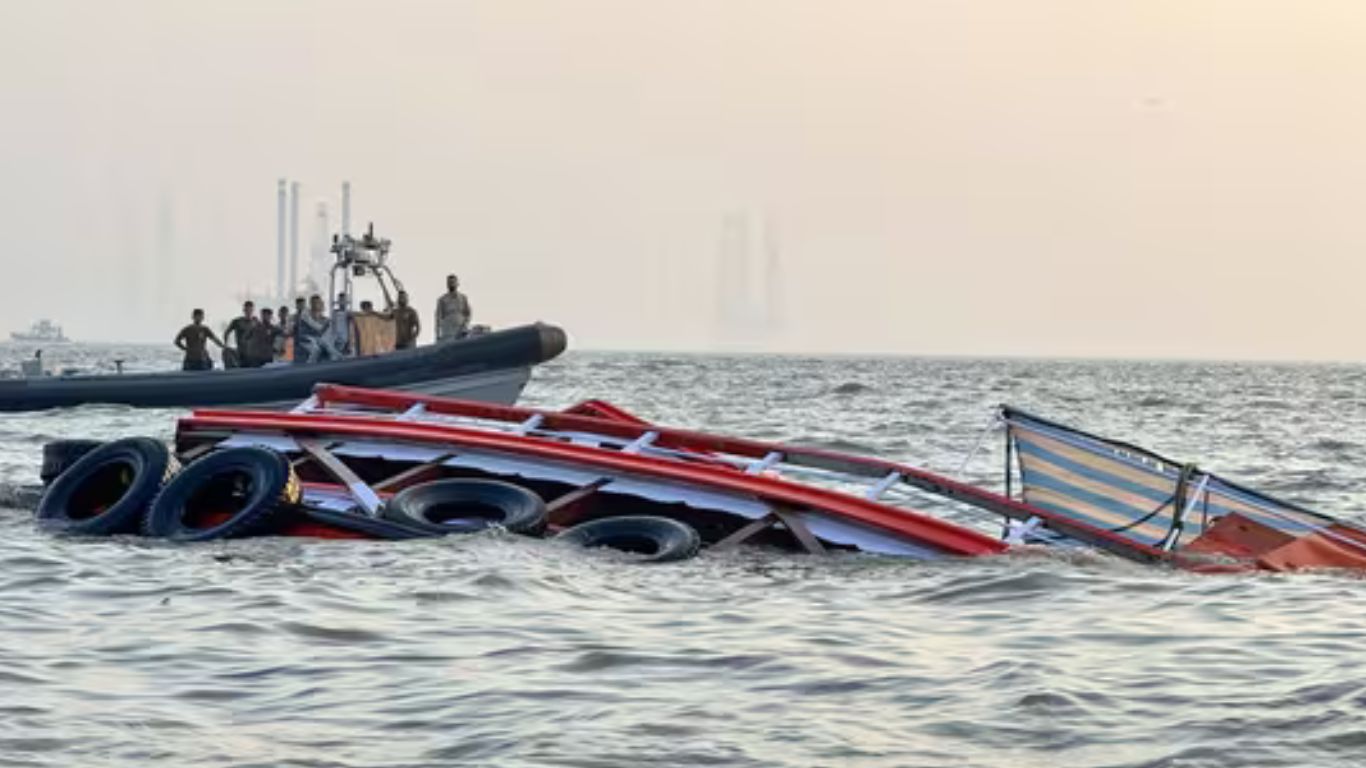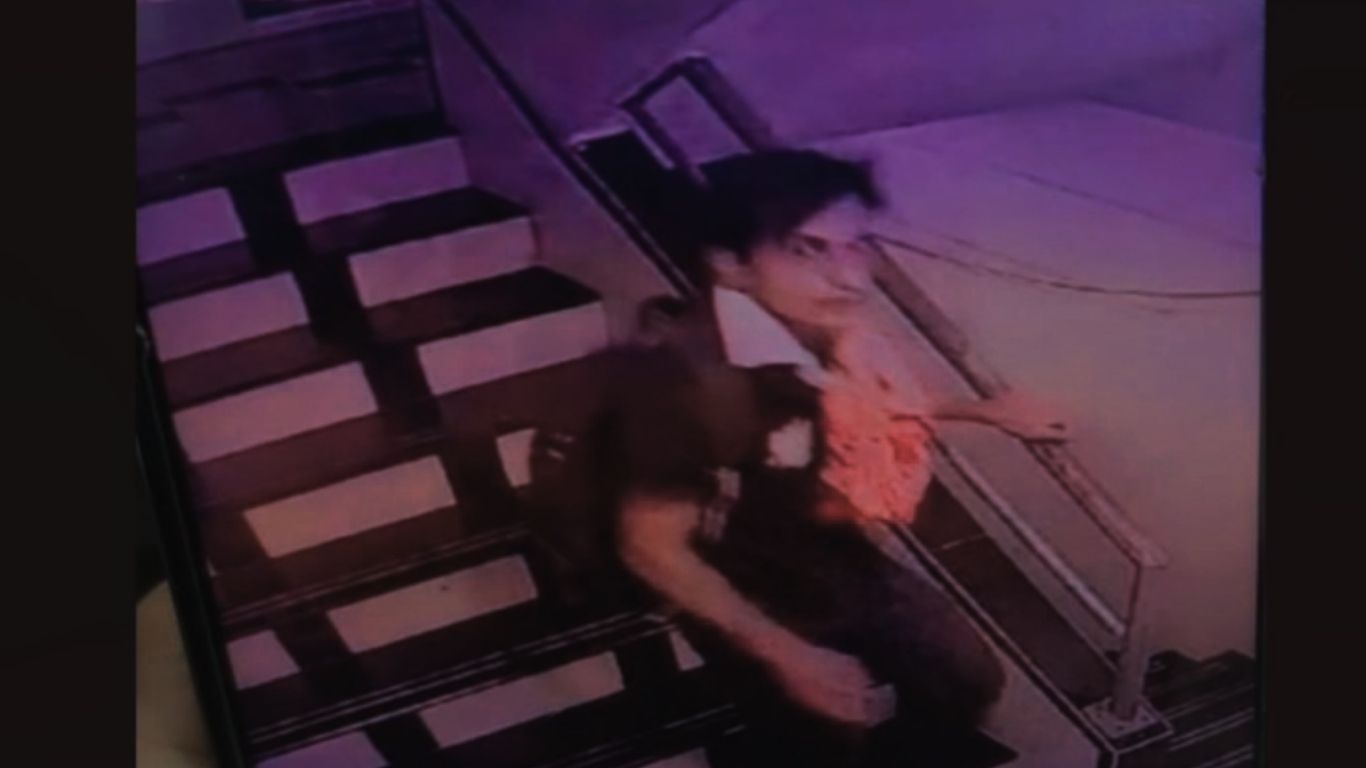In one of the deadliest maritime near Mumbai Boat Accident, a collision between an Indian naval speedboat and a ferry carrying tourists to Elephanta Island led to a tragic loss of life. The incident, which occurred close to Butcher Island, has sparked concerns over safety protocols in the busy waters of the Mumbai harbour.
Overview of the Accident
The collision took place around 4:00 PM on a Wednesday, approximately 2.8 kilometers from the iconic Gateway of India. The ferry vessel, named Neel Kamal, was struck by a naval speedboat undergoing engine trials. The crash resulted in 13 deaths, including a naval sailor and two staff members from a boat manufacturing company. Thankfully, a swift rescue operation saved 101 passengers on board.
Details of the Incident
The ferry was en route to Elephanta Island when the speedboat, described as a Rigid Inflatable Boat (RIB), collided with it. The force of the impact caused significant damage, leading to the capsizing of the ferry. The accident occurred in a busy maritime zone, with the collision happening near Butcher Island off the Mumbai coast.
The Role of Rescue Operations
Rescue efforts began promptly, with nearby trawlers and pilot boats from Jawaharlal Nehru Port (JNPT) arriving at the scene within 15-20 minutes. The Navy, Coast Guard, and marine police were also pressed into action. Helicopters and rescue craft worked tirelessly to pull survivors from the water and transfer them to safety.
Technical Fault: Engine Trial Mishap
The naval speedboat was reportedly conducting engine test trials when a technical fault made it unable to alter its course. This failure led to the catastrophic crash. Rigid Inflatable Boats (RIBs), known for their high speeds and maneuverability, carry risks when not operated under controlled conditions.
Impact on the Ferry Neel Kamal
The impact of the collision caused severe damage to the Neel Kamal ferry, allowing water to flood the vessel. Passengers recounted moments of chaos as the boat began to capsize. The lack of immediate access to life jackets worsened the situation.
Survivors’ Accounts
Eyewitnesses shared harrowing experiences of survival.
- Ashok, a passenger, described how he swam for 15 minutes before being rescued.
- Natharam Chudhary, a survivor, reported delays in rescue teams reaching the spot, exacerbating fears for those struggling in the water.
Passengers highlighted the importance of life jackets, with many expressing frustration at the delays and lack of preparation during the ordeal.
Government’s Response and Rescue Efforts
Chief Minister Devendra Fadnavis praised the swift response, noting that 101 lives were saved due to the coordinated efforts of the rescue teams. He announced an ex-gratia of Rs 5 lakh for the families of the deceased and assured a thorough investigation.
Investigations and Legal Action
An FIR was filed against the speedboat driver and other individuals under sections of the Bhartiya Nyay Sanhita, including charges of causing death by negligence and rash navigation. Authorities are investigating whether the speedboat’s technical fault was preventable.
Tour Operators’ Perspectives
Local boat operators have long voiced concerns about naval vessels operating dangerously close to tourist ferries. Subhash More, a master employed at the Gateway of India, emphasized how naval boats often compromise ferry stability due to their high-speed maneuvers.
Eyewitness Testimonies and Videos
Video recordings captured by passengers showed the speedboat failing to change course before colliding with the ferry. These videos are now a crucial part of the investigation.
Impact on Mumbai Tourism
Following the incident, ferry operations from the Gateway of India were suspended, and tourist boat operator offices were temporarily shut. Enhanced security measures have been put in place to prevent further mishaps.
Lessons Learned
The tragedy highlights an urgent need for stricter maritime safety protocols, including:
- Ensuring all vessels are equipped with sufficient life jackets.
- Conducting safer engine trials away from passenger ferry routes.
- Implementing stronger oversight to prevent similar incidents.
The Mumbai Boat Accident is a sobering reminder of the dangers in maritime transport when safety protocols fail. While rescue efforts saved many lives, the loss of 13 passengers highlights the need for better preparedness and stricter regulations.
FAQs
1. What caused the Mumbai Boat Accident?
The collision occurred due to a suspected technical fault in a naval speedboat conducting engine trials.
2. How many people were rescued during the operation?
A total of 101 passengers were successfully rescued from the ferry.
3. What safety concerns were highlighted by the tragedy?
Lack of life jackets, delays in rescue, and dangerous naval operations near ferries were key concerns.
4. Who is responsible for the collision?
The speedboat driver and others are under investigation, with an FIR lodged against them.
5. What measures are being taken to ensure such incidents do not occur again?
The government has promised stricter maritime safety protocols and a thorough inquiry into the accident.















